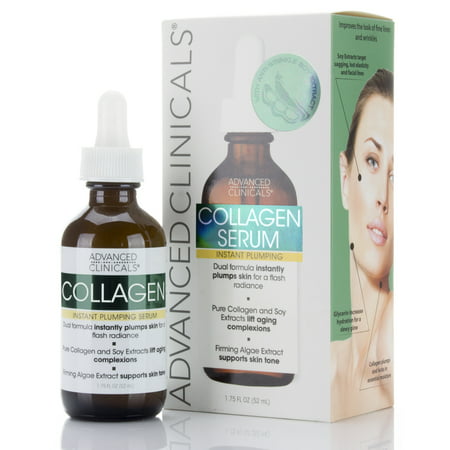Dermalogica BioLumin-C Vitamin C Eye Serum
Dermalogica’s BioLumin-C Vitamin C Eye Serum is formulated with antioxidants and natural botanicals designed specifically to treat fine lines, wrinkles and discoloration without irritation. Powerhouse ingredient vitamin c complex combines the brightening benefits of vitamin c with an anti-wrinkle vegan peptide to illuminate and firm skin.
Dermalogica’s BioLumin-C Vitamin C Eye Serum is formulated with antioxidants and natural botanicals designed specifically to treat fine lines, wrinkles and discoloration without irritation. Powerhouse ingredient vitamin c complex combines the brightening benefits of vitamin c with an anti-wrinkle vegan peptide to illuminate and firm skin. Tremella mushroom stimulates collagen production and locks in moisture improving skin’s elasticity, while arjun tree extract helps reduce puffiness. Papain gently exfoliates and poria mushroom boosts skin’s own hyaluronic acid production – delivering a hydrated, radiant glow.
Being a serum, this formula will absorb quickly and penetrate deeper into the skin.
Skin Concerns:
- Fine Lines and Wrinkle
- Loss of Firmness and Elasticity
- Puffiness
Key Ingredients:
- Vitamin C Complex: Enhances skin’s ability to fight free radical damage and blocks environmental pollutants. This stable form of vitamin c is fused with a unique peptide that uses anti-wrinkle technology to smooth fine lines, brighten discoloration and firm the under eye area.
- Chia Seed Oil: Chia seed oil naturally tightens skin, so when it is applied to the under eye area, its helps to depuff eye bags and combat eye wrinkles while nourishing the delicate area. It is high in antioxidants and helps your skin fight irritation, dehydration, and contains more than 60% omega-3 fatty acid.
- Tremella Mushroom Extract: Hydrates, firms, and restores skin’s natural glow with vitamin d and phytosterols, which stimulate collagen production, restore barrier function and are anti-inflammatory.
- Papain: A natural enzyme that gently exfoliates to encourage cell renewal for brighter, smoother skin.
In an 8 week independent clinical trial, participants found:
- Visibly brighter skin around the eye area upon first use*
- Increased firmness around the eye area after 8 weeks of use*
*your results may vary
Key Callouts
This product is:
- Cruelty-free
- Vegan
- Paraben-free
- Sulfate-free
- Phthalate-free
- Synthetic fragrance-free
- Has recyclable packaging
Additional information
| Ingredients | Water/Aqua/Eau, Butylene Glycol, Propanediol, Glycerin, C15-19 Alkane, Salvia Hispanica Seed Oil, Sodium PCA, Trehalose, Poria Cocos Polysaccharide, Papain, Dunaliella Salina Extract, Aminopropyl Ascorbyl Phosphate, Terminalia Arjuna Extract, Tremella Fuciformis Sporocarp Extract, Ascorbyl Methylsilanol Pectinate, Palmitoyl Tripeptide-5, Sodium Hyaluronate, Phytosterols, Algin, Citrus Grandis (Grapefruit) Peel Oil, Phytosteryl Oleate, Tocopherol, Serine, Oleic Acid, Inositol, Helianthus Annuus (Sunflower) Seed Oil, Betaine, Carrageenan, Panthenol, Dipotassium Glycyrrhizate, Methylpropanediol, Proline, Xylitol, Calcium Gluconate, Pantolactone, Lecithin, Xanthan Gum, Pentylene Glycol, Aminomethyl Propanol, Caprylyl Glycol, Polyacrylate-13, Acrylates/C10-30 Alkyl Acrylate Crosspolymer, Tetrasodium Glutamate Diacetate, Polyisobutene, Ethylhexylglycerin, Sodium Benzoate, Citric Acid, Gluconolactone, Polysorbate 20, Potassium Sorbate, Carbomer, 1,2-Hexanediol, Sodium Hydroxide, Limonene, Phenoxyethanol. Dermalogica is dedicated to maintaining the accuracy of the ingredient lists on this website. However, because ingredients are subject to change, we cannot guarantee that these lists are complete, up-to-date and/or error-free. For an accurate listing of ingredients in each product, please refer to your product packaging. |
|---|






by Kari
I noticed results right away this is. Great serum
by Estie
This isn’t for the the people looking for spectacular results in week. Being consistent will give you the best results. Be careful while using because it is quiet runny.
by Kristen
Just started using this about a week ago. Not long enough to see visible changes. It’s gentle and doesn’t irritate the eyes. Very light citrusy scent. Not too thick or too light. Absorbs quickly.
by Lee
Use around the eyes to decrease fine lines. Is a little difficult to control amount dispensed.
by Tam
Creamy feels great. Work great.
by Sharon
I use it for around my eyes.
by Dama
This eye serum is the best thing ever tried! I been now using it for 2 years and not only it has help with the darkness under my eye but it also hydrates with out clogging my under eye area! Best part is that I am extremely sensitive and this product wont cause me a bad reaction!